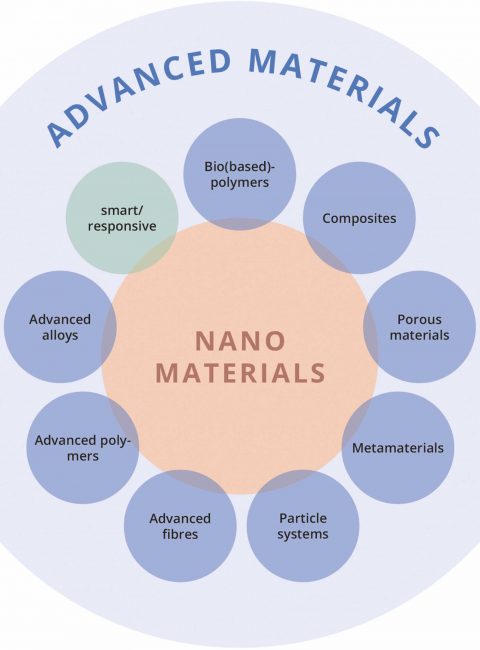 >
Spotlight June 2022: From small to clever – What does the future hold for the safety and sustainability of advanced materials?
>
Spotlight June 2022: From small to clever – What does the future hold for the safety and sustainability of advanced materials?
The smallest particles in materials research, nanoparticles, have occupied us intensively for more than 20 years to elucidate and further investigate their safety for humans and the environment. Now, however, the development is going from “small = nano” to “clever = advanced”, as discussed in a contribution by international scientists. Thereby, it is a great advantage to learn directly from the developments and achievements in the safety research of nanomaterials or to be able to transfer and apply them to advanced materials as well. In addition to the question “What is actually advanced or smart”, the demand for “Safe and sustainable by design (SSbD)” is also raised and the associated challenges are addressed. Important criteria for research here are the possibilities of characterizing the object of investigation, i.e. the concrete description of an advanced material, as well as the quality of the data generated and the data management. Again, the need for close collaboration between scientists from different disciplines with other stakeholders such as industry or regulatory authorities is pointed out. The authors make the important observation that nanosafety research to date has provided and will further provide the tools to meet this new challenge as well.
In doing so, they draw attention to three important prerequisites:
- The extension from “nano” to “advanced materials” should be based on technical criteria and include modelling as well as grouping approaches.
- Furthermore, sustainability should be integrated into the new material designs.
- And finally, these two principles should be firmly anchored in research, innovation and regulation to ensure a smooth transition to the implementation of the new and innovative materials.
Original publication:
Valsami-Jones, E et al. (2022). From small to clever: What does the future hold for the safety and sustainability of advanced materials? Nano Today, 42

Weitere Spotlights
Spotlight January 2023: Special issue on Methods and Protocols in Nanotoxicology published
In the first Spotlight of the new year, we present a special issue on methods and protocols in nanotoxicology published in the journal Frontiers in Toxicology. There are still too few harmonized protocols accepted by the scientific community. To improve this situation, project activities are started and special issues of journals like this one are […]
Read moreSpotlight June 2021: Endotoxin – the reason for false-positive toxicity testing for advanced materials?
Advanced materials, but also nanomaterials are closely examined to determine whether they trigger biological effects that could be harmful to humans and the environment before they are used in products. This also includes such materials as titanium dioxide, which has been used in a wide variety of products for more than 50 years. A particularly […]
Read moreSpotlight October 2022: The titanium dioxide debate – why the current ECHA and EFSA hazard classification should be questioned
Due to various reports and scientific studies, titanium dioxide (TiO2)was also banned in Europe this year (2022) for use as a food additive with the indication that it could possibly be carcinogenic to humans. Although no case of tumour induction in humans has been reported since the use of this material in micro but also […]
Read moreSpotlight April 2022: A new risk assessment of nanomaterials in 3D printing is needed
The use of nanomaterials in 3D printing has great potential. Due to the properties of nanoscale materials, many requirements can be implemented in 3D printing. However, these unique properties based on the size of the particles also lead to the need for new risk assessments. This is because if the nanoparticles are released in the […]
Read more


